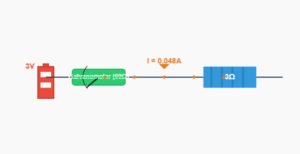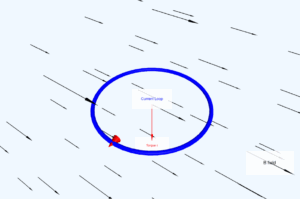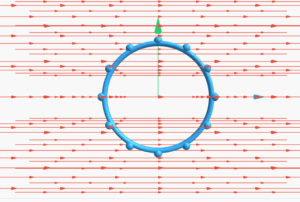Magnetic Suspension Simulation
Example 4.1: Current-Carrying Wire in Magnetic Field
This simulation demonstrates how a magnetic field can suspend a current-carrying wire against gravity.
Example
Question:
A straight wire of mass 200 g and length 1.5 m carries a current of 2 A. It is suspended in mid-air by a uniform horizontal magnetic field \(\mathbf{B}\) (Fig. 4.3). What is the magnitude of the magnetic field?
Solution:
From the equation \(\mathbf{F} = I\mathbf{l} \times \mathbf{B}\), we find that there is an upward force \(\mathbf{F}\) of magnitude \(IlB\). For mid-air suspension, this must be balanced by the force due to gravity: \[ mg = IlB \] Therefore, \[ B = \frac{mg}{Il} = \frac{0.2 \times 9.8}{2 \times 1.5} = 0.65\,\text{T} \] Note that it would have been sufficient to specify \(m/l\), the mass per unit length of the wire. The earth's magnetic field is approximately \(4 \times 10^{-5}\,\text{T}\) and we have ignored it.



